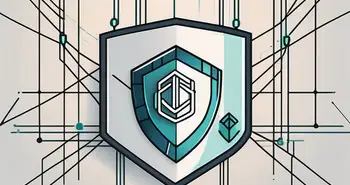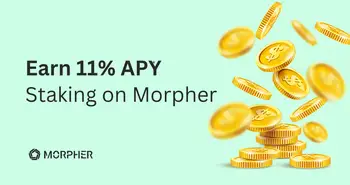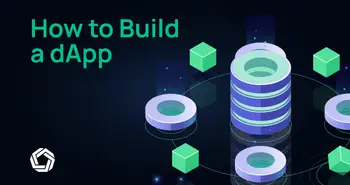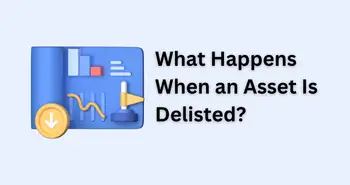Is Crypto Staking Safe? How To Earn 11% APY

How Does Crypto Staking Work?
Crypto staking at a high level is when a user locks their funds in a smart contract in return for rewards from the network. This process is necessary because blockchains operate differently from centralized financial systems. Decentralization mandates that users distribute the workload, and blockchains need to add data blocks to the network using a consensus mechanism.
Blockchains using the Proof of Stake (PoS) consensus mechanism rely on users staking their assets to help validate and secure the network. A classic example would be Ethereum or Polygon. There are two groups of stakers: validators and delegators. Validators run a node, which requires technical knowledge and a significant initial stake. Delegators allocate their assets to a validator of their choice.
Whenever a blockchain wants to add new data to the ledger, this data must first be validated, and nodes must reach a consensus. Stakers who have locked their assets in the staking smart contract have a chance to validate the information. The validator selected by the blockchain algorithm earns a reward for validating data correctly. Similarly, validators who approve invalid transactions suffer the risk of slashing. Slashing is a financial disincentive that encourages honest validator behavior, with validators who behave dishonestly losing part or all of their initial stake.
In simple terms, staking involves locking crypto to help secure the network, and the network pays the stakers for their security contribution.
Is It Worth Staking Crypto?
Staking crypto has been highly popular among investors for several reasons, including financial incentives and philosophical alignment. Staking is a novel financial and game theory-based incentives model introduced by blockchains without an equivalent in TradFi.
Passive Income
Staking presents a low-touch source of passive income. Investors do not have to worry about impermanent loss as staking is single-sided exposure. Investors stake token X and receive token X from the network. Investors do not need to monitor their assets and earn security payments from the network, making staking one of the easiest ways to grow their portfolio, especially with an asset they have conviction in. Staking puts the investor’s assets to work on their behalf. If a network offers staking rewards, typically inflationary, the investor’s total supply is steadily diluted if they do not stake―another game-theory mechanic underpinning staking.
Supporting The Network
By staking their cryptocurrency, investors contribute to the essential functioning of their chosen blockchain network. The more cryptocurrency that is staked on a PoS blockchain, the more secure the network becomes, as it becomes more difficult for attackers to control a significant portion of the network's assets.
Staking does provide passive income to stakers, but at its core, staking supports the blockchain to function by validating transactions and securing the network.
Increasing Security
Staking is a crucial process that enhances the security and decentralization of blockchain networks. One of the greatest threats to blockchains is a 51% attack. A 51% attack involves a malicious group or entity gaining control of 51% of the mining and validating power. With PoS, bad actors would have to acquire 51% of all the staked tokens, and this attack would be insanely expensive. PoS forms a capital shield, and more stakers means greater protection.
Potential Risks of Staking Crypto
Staking does not come without its risks. However, most of the risk associated with staking comes from the investors’ selection of the asset they choose to stake and the platform they choose to stake it on.
Market Volatility
Crypto markets are volatile. This volatility draws investors to crypto, but it is a double-edged sword. Staking rewards are denominated in the staked asset; therefore, the asset's price denotes the staking rewards in dollar terms. Investors will face a heavy loss if an asset offers 400% APY in staking rewards but its price declines by 90%. However, the greatest advantage of staking is the lack of risk entailed compared to other DeFi yield strategies. Investors should select a token they have long-term conviction in, helping them drown out the short-term noise.
Lock Up Periods
Most staking processes involve an unbonding or lockup period anywhere from two days to thirty days, depending on the asset. Investors who use centralized exchanges may have to select a lock-up period ranging from weeks to a year and must understand that they will not be able to access their assets once they have agreed to the lock-up period. The dangers of lock-up periods walk hand in hand with volatility. A common phenomenon of DeFi summer 2020 was token lock-ups in return for greater staking rewards. This reduces the circulating supply and allows for more dramatic price action. But, it also means that investors' tokens are illiquid, and they cannot access them or sell them in the event that the token price begins to collapse. So, try to avoid lock-up periods and use the right crypto wallet when staking so you don't run into the issue of “not your keys, not your coins.”
Technical Risks
This sector applies more directly to validators as opposed to delegators. Validators must ensure that their node is constantly running and has the appropriate updates; otherwise, they will face the risk of slashing and losing part or all of their initial stake. This presents one of the greatest advantages of staking through a centralized provider. The provider will be responsible for running the node. Given the capitalized nature of exchanges and the technical knowledge of their staff, the risk of slashing is heavily reduced, and investors do not have to worry about these technical penalties. But investors must pay a fee for this service. However, it is often negligible and comes from the staking rewards meaning an investor pays nothing upfront.
Ways To Mitigate Risks
The best approach to mitigating risk is for the investors to set aside the time to understand the underlying asset. Investors should be less focused on the APY/ APR offered and more interested in the longevity of the staked asset.
Researching Projects
Investors throw the term DYOR around on Crypto Twitter, but what does it mean? Before entering any investment, an investor should be able to give a brief overview of the project, describe the project in one sentence, outline its value proposition, understand the core technology, understand the niche and target market, the token unlock schedule and future catalysts for growth. Does the token have value accrual mechanisms? What are the tokenomics like? For investors more familiar with traditional investing, they will immediately draw a parallel between fundamental analysis and DYOR.
Staking rewards should always be a bonus, never the sole reason for owning a token. If the only value it provides is inflationary yield, eventually, sell pressure will cause the token to dump, and no APY/ APR can save an investor if the token loses 90% of its value.
Diversifying Investments
Speaking more broadly on how investors can mitigate risk, diversification should be an ingrained habit. An investor’s portfolio should feature protocols that address different market verticals, and diversification moves both ways. As well as insulating an investor, it allows them broader market exposure and increases the chances of catching a rising tide in a specific sector. The level of diversification will depend on the investor and their risk tolerance. A percentage of their portfolio could be allocated to blue chips, a lesser percentage to smaller market cap projects, and a smaller percentage to microcap projects.
Examples of Good and Bad Staking Projects
The two examples below highlight the difference between the quality of staking projects. One project employs staking to validate the network and bolster decentralization with grounded economic incentives; the other offers a highly inflationary and unsustainable staking yield.
Ethereum: The Gold Standard of Staking
Ethereum, the second-largest cryptocurrency by market capitalization, recently transitioned to a Proof of Stake (PoS) consensus mechanism through its Ethereum 2.0 upgrade on September 15th, 2022. The move has been hailed as a significant milestone for the blockchain industry, as Ethereum is one of the most widely used and recognized blockchains in the world.
Staking withdrawals have yet to be enabled, but users can either stake 32 ETH directly into the Ethereum staking contract or use a decentralized staking solution.
Ethereum's staking mechanism has been widely praised as a gold standard for staking projects. It promotes decentralization and provides sustainable economic incentives to validators, ensuring the long-term viability of the network.
Wonderland (TIME): Ponzinomics
Arguably the most popular Olympus DAO fork and a protocol that perfectly epitomizes a top signal and how frothy the crypto market had become in late 2021. Wonderland aimed to create a decentralized reserve currency protocol and backed the value of TIME with assets held in the treasury.
Wonderland initially offered an APY north of 80,000%; note that APY takes into account the power of compounding. These highly inflationary yields were economically unsustainable, and investors will see what happened to the price of TIME in the chart below.

Not only did market conditions reverse, one of the project leads was found to be a convicted felon, and the project had overleveraged. Wonderland acts as a cautionary tale for investors drawn to high-staking APYs.
Staking MPH on Morpher (11% APY)
Another good staking project example is Morpher. It is a unique trading platform that allows users to trade stocks, cryptocurrencies, forex, and unique markets, such as NFTs, without any fees or commissions. Founded in 2018 by Martin Froehler and Denis Bykov, the platform has received $8.5 million in funding so far and is backed by well-known investors such as Tim Draper.
All trades on Morpher are settled in MPH (Morpher’s native token). Users can place bets on markets such as Apple, Testa, or Bitcoin and earn or lose MPH in proportion to the price change of the market.
What really sets Morpher apart from other trading platforms is its combination of features such as zero fees, infinite liquidity, shorting, instant trade settlements, and no counterparties. This approach offers traders complete freedom and flexibility in their trading decisions, aligning with Morpher's mission to democratize trading globally through blockchain technology.
Staking is another feature of the Morpher platform that allows users to earn income by locking up their MPH tokens in the Morpher Wallet for a minimum of 30 days and earning 0.03% daily (11% yearly) interest.
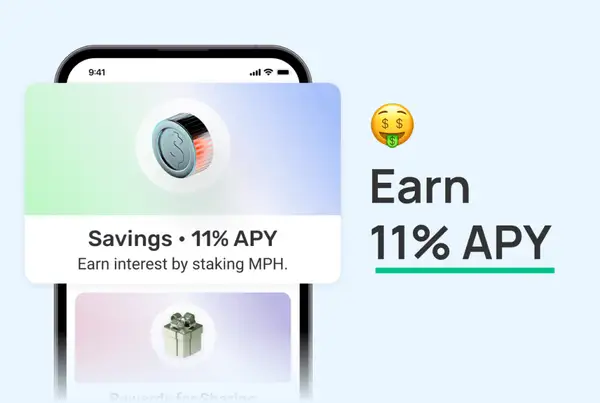
In order to withdraw (unstake) your funds from the staking pool, a 30-day waiting period is required after each stake. This means that every time you make a new stake, the 30-day lockup period will be applied to your funds again. However, once 30 days have elapsed since your last deposit (stake), you are free to withdraw your funds at any time.
Currently, MPH rewards are inflationary, a natural part of distributing tokens. But over time, the staking rate will converge with the margin interest rate (the fee paid by users trading with leverage on the platform), which underpins the economic model of staking on Morpher.
Because all trading on Morpher is denominated in MPH, greater trading activity means greater demand for MPH. A huge natural source of buy pressure for MPH, and as Morpher sees its trading volume rise, from a probabilistic standpoint, MPH is likely to appreciate in value.
Conclusion
Staking is an excellent way for investors to put their assets to work in a low-touch manner, and staking builds out the core ethos underpinning digital assets: financial autonomy. Investors can control their assets and decide how to put them to use. Typically in TradFi, investors face the option of yield paid by a bank from its lending operations or returns from a passive index fund. Digital assets have decentralized the process of earning yield allowing regular market participants access to financial services typically only available to high-net-worth individuals, and created new forms of earning, such as staking.
Staking helps to secure networks or provide liquidity enabling smooth operations of services. Investors should always understand where the rewards come from and focus on the asset they choose to stake as opposed to the APR/ APY offered.

Disclaimer: All investments involve risk, and the past performance of a security, industry, sector, market, financial product, trading strategy, or individual’s trading does not guarantee future results or returns. Investors are fully responsible for any investment decisions they make. Such decisions should be based solely on an evaluation of their financial circumstances, investment objectives, risk tolerance, and liquidity needs. This post does not constitute investment advice.

Painless trading for everyone
Hundreds of markets all in one place - Apple, Bitcoin, Gold, Watches, NFTs, Sneakers and so much more.

Painless trading for everyone
Hundreds of markets all in one place - Apple, Bitcoin, Gold, Watches, NFTs, Sneakers and so much more.

